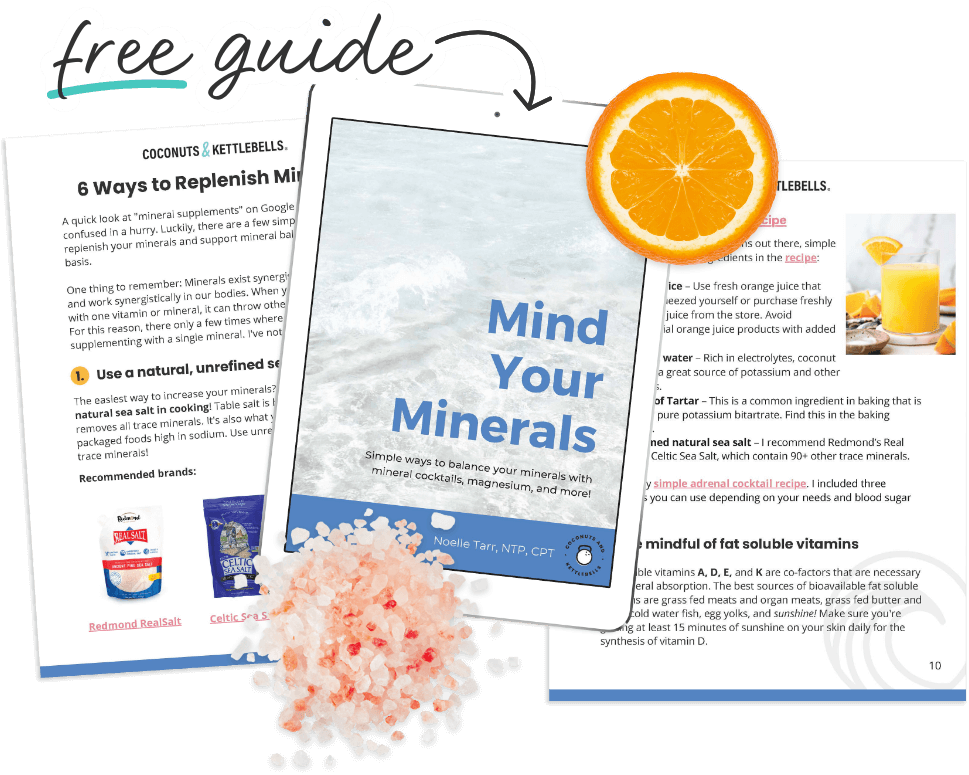Magnesium is the fourth most abundant mineral in your body. It’s incredibly important to your overall health because it serves as a catalyst for more than 600 chemical reactions!
If you’re not meeting your daily magnesium needs, any one of those chemical reactions can take a hit. And sometimes, this can cause unexplained symptoms that are overlooked or misunderstood. A deficiency can cause everything from headaches and hormone issues to fatigue and sleep problems!
Magnesium plays a crucial role in muscle and nerve health, metabolic function, blood pressure, and it contributes to the synthesis of protein, bone, and DNA. So, it’s sort of like the MVP of minerals.
Unfortunately, research indicates that nearly 50% of the U.S. population is deficient in magnesium, including adults and children. While there are many different types of magnesium supplements available, not all are created equal. In fact, many aren’t bioavailable or absorbed into cells. This is why taking the correct magnesium dose and type is so important.

Magnesium Deficiency
When you’re deficient in magnesium, you can experience a wide variety of negative symptoms. The most common symptoms include:
- Muscle cramps
- Insomnia
- Fatigue
- Anxiety and Mood changes
- Diabetes
- Headaches and migraines
- Heart problems
- High blood pressure
- Bone density issues
Magnesium deficiency also plays a role in hormone imbalances and PMS symptoms. Low serum magnesium concentrations are even linked to higher rates of mortality.
Does Type of Magnesium Matter?
The type of magnesium you take greatly influences how much magnesium is actually absorbed into your cells. If you take a form that is less bioavailable, you could still be experiencing a deficiency.
Magnesium reacts strongly and quickly with other elements. Because of this reactivity, it must be linked to another element to form a compound. The bioavailability of a specific form of magnesium depends on what it is bound to.
Studies consistently show inorganic salts—or substances that aren’t biological in origin—are harder for the body to absorb. Inorganic salts of magnesium include magnesium oxide, magnesium sulfate, and magnesium chloride. In fact, literature suggests magnesium oxide has an absorbability as low as 4%.
When magnesium is bound to an organic substance, or something that is biological in origin, the magnesium is properly carried into cells. Organic forms of magnesium include magnesium lysinate glycinate, magnesium glycinate, magnesium malate, and magnesium taurate.
The best way to make sure you are absorbing your magnesium is to take an organic form that is chelated, like magnesium lysinate glycinate. When elemental magnesium is chelated, it is bound to a carrier by two or more points of attachment. This makes it more stable and better absorbed by the body.
Recommended Daily Dose of Magnesium
The National Institute of Health puts the RDA for adults over 31 at 420 mg for males and 310 mg for females (or 350 mg for pregnant females). An evidence-based dose for supplementation for adults is anywhere between 200 – 400 mg. Here’s the breakdown by age:
| Age | Male | Female | Pregnancy | Lactation |
|---|---|---|---|---|
| Birth to 6 months | 30 mg* | 30 mg* | ||
| 7–12 months | 75 mg* | 75 mg* | ||
| 1–3 years | 80 mg | 80 mg | ||
| 4–8 years | 130 mg | 130 mg | ||
| 9–13 years | 240 mg | 240 mg | ||
| 14–18 years | 410 mg | 360 mg | 400 mg | 360 mg |
| 19–30 years | 400 mg | 310 mg | 350 mg | 310 mg |
| 31–50 years | 420 mg | 320 mg | 360 mg | 320 mg |
| 51+ years | 420 mg | 320 mg |
How much you need is unique to you and your biochemistry, so it’s always important to work with a trusted medical provider if you have questions about your daily dose of magnesium.
Also, because different forms of magnesium have different absorbability rates, the type you take may influence how much you need to improve your symptoms. For example, you could be supplementing with 400 mg of magnesium oxide, but actually absorb less than if you were to take 200 mg of magnesium lysinate glycinate.
Is 500 mg of Magnesium Too Much?
Let’s look at the information we have. The Recommended Dietary Allowances (RDAs) are the intake levels for nutrients that meet the needs of nearly all healthy individuals in a particular group. For women age 19+, that’s around 310- 320 mg of magnesium.
Tolerable Upper Intake Level is the maximum daily intake unlikely to cause negative effects. The Upper Intake for magnesium is 350 mg, specifically from supplements.
Does this mean taking more can result in negative symptoms? Not necessarily Everyone is different, and if you have a deficiency, you may need more depending on your needs. This is why it’s important to work with a trusted medical practitioner when it comes to your own needs.
While many studies that show 500 mg of magnesium is well tolerated and results in positive effects, many of these studies use inorganic salts of magnesium, and therefore are poorly absorbed. In other words, taking a highly absorbable form of magnesium may mean you need only 200 mg of magnesium from supplements in order to meet your magnesium requirements.

How Much Magnesium is Too Much?
While it’s rare for people to overdose on magnesium, taking in too much magnesium in supplement form can result in diarrhea and abdominal cramping. Magnesium—specifically inorganic forms that aren’t chelated like magnesium oxide—draws water into the intestines, working as an osmotic laxative. This is why some forms of magnesium are used as stool softeners. That loose stool is actually the magnesium ended up in the toilet, so less gets into your cells.
Forms of magnesium that more commonly result in diarrhea include magnesium oxide, chloride, gluconate, and oxide.
Other symptoms of excess magnesium include:
- Low blood pressure
- Muscle weakness
- Nausea and vomiting
- Irregular heartbeat
- Facial flushing
Understanding Magnesium Dosage
Because deficiency is common in the US, most people can benefit from supplementing with magnesium daily. So, what’s a good daily dose of magnesium for you? That depends on your needs and the form you’re taking.
An evidence-based dose of magnesium for men and women is anywhere between 200 mg – 400 mg. The most important thing you can do is take a highly absorbable form that is chelated like magnesium lysinate glycinate. Taking too much magnesium may result in loose stools.
For more insight, consider getting your magnesium levels tested before you supplement and 4-6 months after you begin supplementation. Consulting with a healthcare professional can also provide personalized guidance according to your needs.
If you want to take a highly absorbable form of magnesium to support restful sleep, a calm mood, or reduce stress related symptoms, take Well Minerals More Chill Magnesium or Pure Magnesium Lysinate Glycinate. Both are 100% chelated and designed with a special MCT formulation that eliminates unwanted additives and fillers.



0 Comments